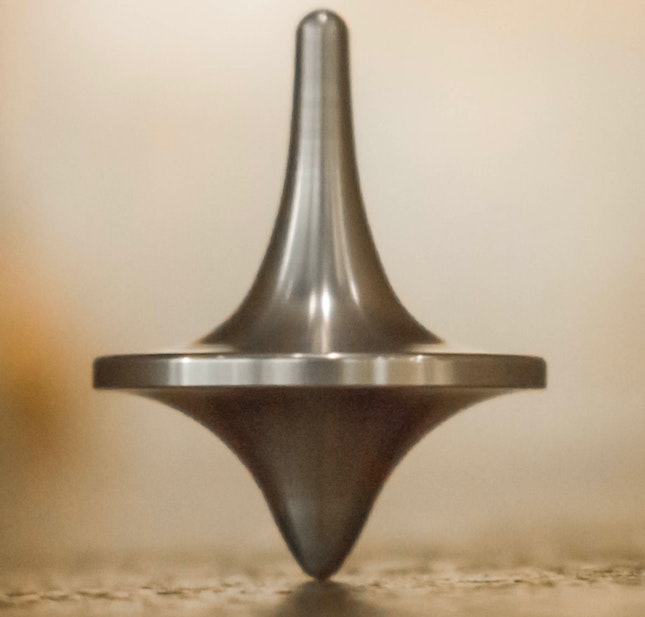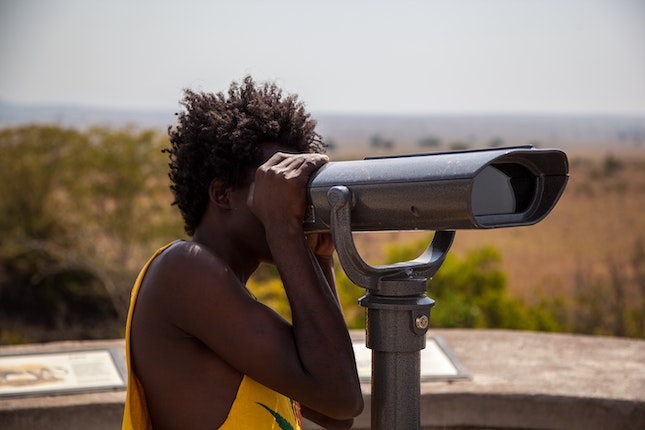Writing Your Mystery Novel: How to Balance the Big Picture and the Details

“People on the outside think there’s something magical about writing, that you go up in the attic at midnight and cast the bones and come down in the morning with a story, but it isn’t like that. You sit in back of the typewriter and you work, and that’s all there is to it.”
—Harlan Ellison
When you’re writing your mystery novel, it sometimes feels like you’re trying to balance a spinning top. You have the big picture of your story and the details of each scene. You know the scene needs to move the story forward. At the same time you want to concentrate on the details like dialogue the fits the character, the sensory elements, and character emotions. And each scene has a goal, a conflict, and a resolution.
Writing a novel of any kind is a big project. Just like any big project, the best way to find a solution and reach that goal of finishing is to break it down into manageable smaller actions.
Do Your Prep
You know the adage, first things first. It applies to novel writing, too. You need to flesh out that story idea with a setting, characters, your detective hero or heroine, suspects, the villain, and supporting characters like a mentor, a sidekick, or a love interest.
The more you know about your characters—motivations, likes, dislikes, responses under pressure, etc.—the better equipped you are to write them in a scene. You’ll know how they act and how they respond. Even pantsers benefit from creating character backgrounds for their characters.
The same background work applies to setting. You want to know the details. You’ll use them as your detective navigates the story world. Know the streets, the building structures, the weather, the mountains, valleys, streams, rivers, lakes. All those details will help you ground your scenes.
When it comes to plotting, knowing the main story points allows you to head each scene in the direction of the next big story point. That way you’ll avoid writing yourself into a corner. I’ve talked to a lot of pantsers (discovery writers). Most of them say they have a general idea of the story even if they don’t know exactly what happens. And, I know pantsers who say they want to discover the villain as they write, the same way the reader does when they read the mystery.
Whatever your chosen planning style, the more prep you do beforehand, the easier the writing is. You’ll have the big picture.
Build With Scenes
You know the drill with scenes—each scene moves the story forward. That means you know why the scene fits in the story: it’s context.
Because scenes are the building blocks of your story and you know the context, you can bring in the details (those details from your backgrounds) to bring the scene to life. When you settle on the point-of-view character’s goal in the scene, work toward the conflict, and the the scene resolution. Each scene is a mini-story with a beginning, middle, and end.
Make sure to bring in setting details and relate them to the characters. Are they comfortable in the environment? Edgy? Confident? Uncertain? Let the reader know how the setting affects your character.
Use what you know about each character’s personality and background to give the distinctive speech patterns that make your dialog realistic and believable.
Add two or three sensory details for your character. How do they feel, touch, hear, taste, and see what’s in the world around them?
The trick is to use what you know about setting and characters to fill in details in each scene. If you tried to figure out which details you’re going to use in the story (the big picture) you’ll get lost. If you concentrate on what details to use in the scene you are currently writing, your entire story is filled with enriching details. You’ve worked through them scene by scene.
Concentrate on the Before and During
The “before” is the preparation you do in advance of writing. The “during” is focusing on each scene as you write. If you do your preparation work and write each scene filled with details, you’ll find your story naturally balances the big picture and the details.
Once you’ve finished the first draft, spend your editing time filling in any holes. Work on the plot holes first. The follow up by working through each scenes goal, conflict, and resolution to make sure all three are present. Then fill in any missing character, setting, or sensory details.
When you work through your story scene by scene, you find you have created the big picture of the entire story without stress.
Photo by Ash from Modern Afflatus on Unsplash




